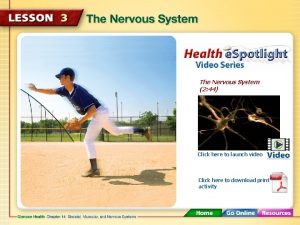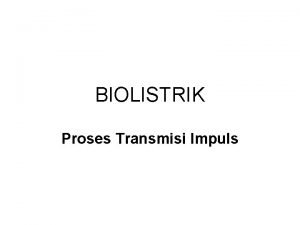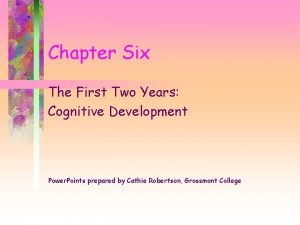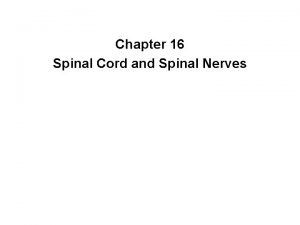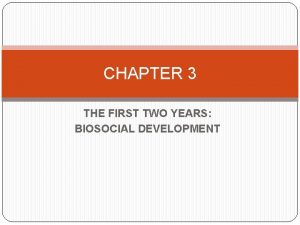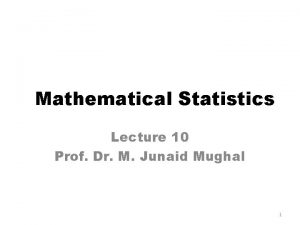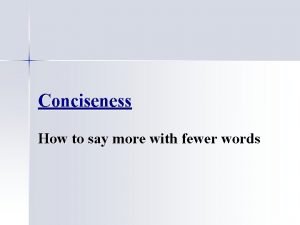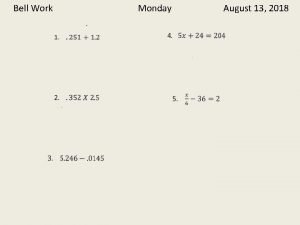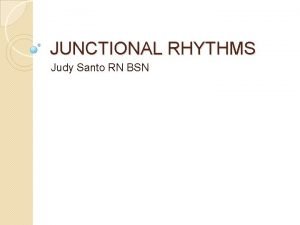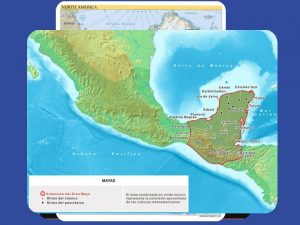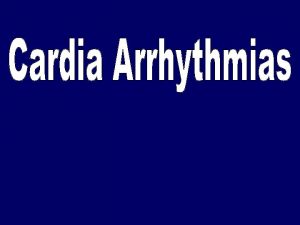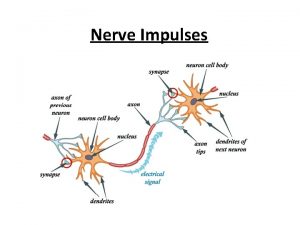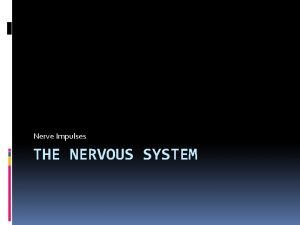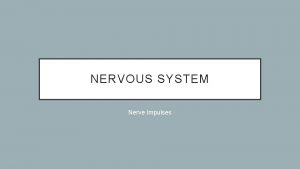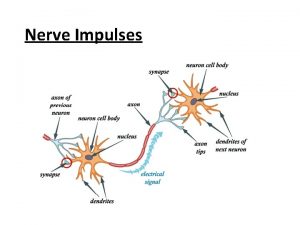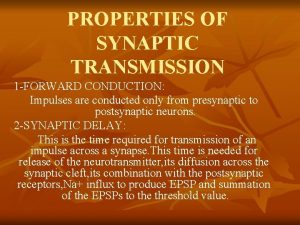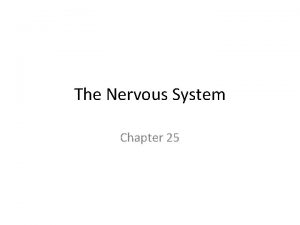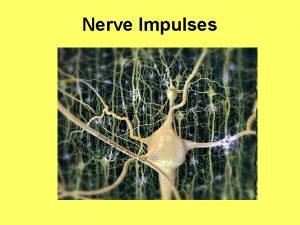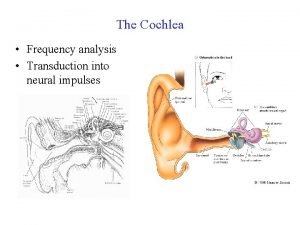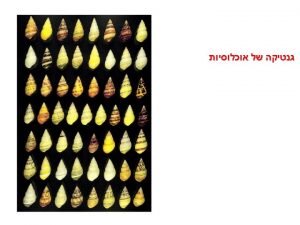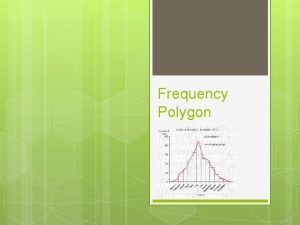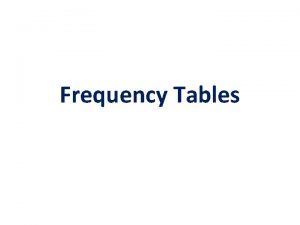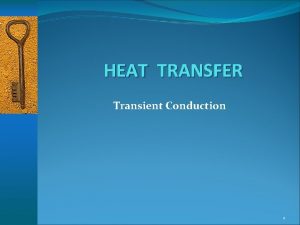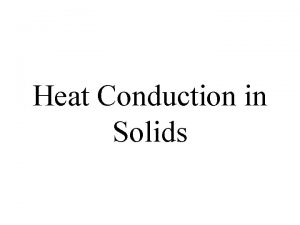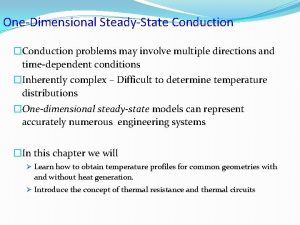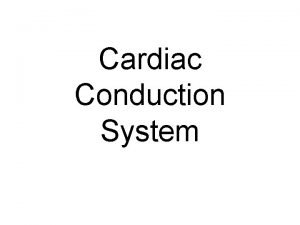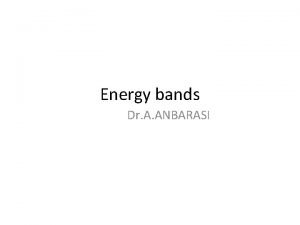Impulse conduction Impulses originate regularly at a frequency


















![SVT Paroxysmal Supraventricular tachycardia [HR 160250/min] • Atrioventricular nodal re-entry tachycardia (AVNRT) • It SVT Paroxysmal Supraventricular tachycardia [HR 160250/min] • Atrioventricular nodal re-entry tachycardia (AVNRT) • It](https://slidetodoc.com/presentation_image/ae0670b69ef89f85e7cf1f0af217d835/image-19.jpg)
































- Slides: 51


Impulse conduction Impulses originate regularly at a frequency of 60 -100 beat/ min SAN AVN

0 -20 -40 -60 Cardiac Action Potential Phase 1 20 Phase 2 (Plateau Phase) Depolarization mv Phase 0 Phase 3 Phase 4 -80 Resting membrane Potential + Na ++ Na Na -100 Na Na+++ Na m Na+ h ++ ++ caca ca++ K+ +++ +K KKK ca++ K+ ATPase Na+

mv -20 -40 -60 R. M. P Phase 2 (Plateau Phase) Depolarization 0 Cardiac Action Potential Phase 1 20 Phase 4 (only in pacemaker cells Phase 3 Phase 4 -80 -100 + Na Na Na++++ Na Na+ Na m Na+ h ++ ++ caca ca++ K+ +++ +K KKK ca++ K+ ATPase Na+

Cardiac Arrhythmias ●An abnormality of the cardiac rhythm is called a cardiac arrhythmia. ● Arrhythmias may cause sudden death, syncope, heart failure, dizziness, palpitations or no symptoms at all. ● There are two main types of arrhythmia: bradycardia: the heart rate is slow (< 60 b. p. m). tachycardia: the heart rate is fast (> 100 b. p. m).

Mechanisms of Cardiac Arrhythmias Mechanisms of bradicardias: Sinus bradycardia is a result of abnormally slow automaticity while bradycardia due to AV block is caused by abnormal conduction within the AV node or the distal AV conduction system. Mechanisms generating tachycardias include: - Accelerated automaticity. - Triggered activity - Re-entry (or circus movements)

ACCELERATED AUTOMATICITY • It occurs due to increasing the rate of diastolic depolarization or changing the threshold potential. • Abnormal automaticity can occur in virtually all cardiac tissues and may initiate arrhythmias. • Such changes are thought to produce sinus tachycardia, escape rhythms and accelerated AV nodal (junctional) rhythms.

TRIGGERED ACTIVITY • Myocardial damage can result in oscillations of the transmembrane potential at the end of the action potential. These oscillations, which are called 'after depolarizations', may reach threshold potential and produce an arrhythmia. • The abnormal oscillations can be exaggerated by pacing, catecholamines, electrolyte disturbances, and some medications. • Examples as atrial tachycardias produced by digoxin toxicity and the initiation of ventricular arrhythmia in the long QT syndrome.

Re-entry (or circus movement) • The mechanism of re-entry occurs when a 'ring' of cardiac tissue surrounds an inexcitable core (e. g. in a region of scarred myocardium). Tachycardia is initiated if an ectopic beat finds one limb refractory (α) resulting in unidirectional block and the other limb excitable. Provided conduction through the excitable limb (β) is slow enough, the other limb (α) will have recovered and will allow retrograde activation to complete the re-entry loop. If the time to conduct around the ring is longer than the recovery times (refractory periods) of the tissue within the ring, circus movement will be maintained, producing a run of tachycardia. • The majority of regular paroxysmal tachycardias are produced by this mechanism.

Reentry Arrhythmias Normal Re-enterant Tachycardia

Classification of Arrhythmia • Arrhythmias of sinus origin : the electrical activity follows the usual conduction pathway , but it is either too fast , too slow , or irregular. • Ectopic rhythms : the electrical activity originates elsewhere than the sinus node. • Conduction blocks : the electrical activity follows the usual conduction pathway , but encounters unexpected blocks and delays.

Sinus arrhythmia: • A condition in which the heart rate varies with breathing. • This is usually a benign condition

Bradycardias Sinus Bradycardia • Physiological variant due to strong vagal tone or atheletic training. • Rate as low as 50 at rest and 40 during sleep. • Common causes of sinus bradycardia include: • Extrinsic causes ; Hypothermia, hypothyroidism, cholestatic jaundice and raised intracranial pressure. Drug therapy with betablockers, digitalis and other antiarrhythmic drugs. • Intrinsic causes; Acute ischaemia and infarction of the sinus node (as a complication of acute myocardial infarction). Chronic degenerative changes such as fibrosis of the atrium and sinus node (sick sinus syndrome).

SINUS BRADYCARDIA

Sinus tachycardia • A condition in which the heart rate is 100 -160/min • Symptoms may occur with rapid heart rates including; weakness, fatigue, dizziness, or palpitations. • Sinus tachycardia is often temporary, occurring under stresses from exercise, strong emotions, fever, dehydration, thyrotoxicosis, anemia and heart failure. • If necessary, beta-blockers may be used to slow the sinus rate, e. g. in hyperthyroidism

Sinus tachycardia converted to NSR

Ectopic Rhythm • Are abnormal rhythms that arise from elsewhere than the SA node. • Ectopic supraventricular arrhythmias. * supraventricular tachycardia * Atrial flutter * Atrial fibrillation • Ectopic ventricular arrhythmias.

SUPRAVENTRICULAR TACHYCARDIAS • Supraventricular tachycardias (SVTs) arise from the atrium or the atrioventricular junction. • Conduction is via the His-Purkinje system; therefore the QRS shape during tachycardia is usually similar to that seen in the same patient during baseline rhythm.
![SVT Paroxysmal Supraventricular tachycardia HR 160250min Atrioventricular nodal reentry tachycardia AVNRT It SVT Paroxysmal Supraventricular tachycardia [HR 160250/min] • Atrioventricular nodal re-entry tachycardia (AVNRT) • It](https://slidetodoc.com/presentation_image/ae0670b69ef89f85e7cf1f0af217d835/image-19.jpg)
SVT Paroxysmal Supraventricular tachycardia [HR 160250/min] • Atrioventricular nodal re-entry tachycardia (AVNRT) • It usually begins and ends rapidly, occurring in repeated periods. This condition cause symptoms such as weakness, fatigue, dizziness, fainting, or palpitations if the heart rate becomes too fast. • In AVNRT, there are two functionally and anatomically different pathways within the AV node: one is characterized by a short effective refractory period and slow conduction, and the other has a longer effective refractory period and conducts faster.

AVNRT (continue) The rhythm is recognized on ECG by normal regular QRS complexes, usually at a rate of 140 -240 per minute. Sometimes the QRS complexes will show typical bundle branch block. P waves are either not visible or are seen immediately before or after the QRS complex because of simultaneous atrial and ventricular activation.

PSVT Acute Management • Patients presenting with SVTs and haemodynamic instability require emergency cardioversion. • If the patient is haemodynamically stable, vagal manoeuvres, including right carotid massage, Valsalva manoeuvre and facial immersion in cold water can be successfully employed. • If not successful, intravenous adenosine (up to 0. 25 mg/kg) , verapamil 5 -10 mg i. v. over 5 -10 minutes, i. v. diltiazem, or beta-blockers should be tried. Long-term management • It includes ablation of an accessory pathway. Also, verapamil, diltiazem & β-blockers; are effective in 60 -80% of patients.

supraventricular arrhythmias. Atrial flutter (HR 200 -350/min) • A condition in which the electrical signals come from the atria at a fast but even rate, often causing the ventricles to contract faster and increase the heart rate. • When the signals from the atria are coming at a faster rate than the ventricles can respond to, the ECG pattern develops a signature "sawtooth" pattern, showing two or more flutter waves between each QRS complex.

supraventricular arrhythmias. Atrial flutter (TREATMENT) • Treatment of the symptomatic acute paroxysm is electrical cardioversion. • Patients who have been in atrial flutter more than 1 -2 days should be treated in a similar manner to patients with atrial fibrillation and anticoagulated for 4 weeks prior to cardioversion. • Recurrent paroxysms may be prevented by class Ic and class III agents • The treatment of choice for patients with recurrent atrial flutter is radiofrequency catheter ablation

ATRIAL FLUTTER

Ectopic supraventricular arrhythmias. Atrial fibrillation (AF) - • A condition in which the electrical signals come from the atria at a very fast and erratic rate. The ventricles contract in an irregular manner because of the erratic signals coming from the atria. • The ECG shows normal but irregular QRS complexes, fine oscillations of the baseline (so-called fibrillation or f waves) and no P waves. • Common causes include CAD, valvular heart disease, hypertension, hyperthyroidism and others. In some patients no cause can be found.

ATRIAL FIBRILLATION

Ectopic supraventricular arrhythmias. Management • When atrial fibrillation is due to an acute precipitating event such as alcohol toxicity, chest infection or hyperthyroidism, the provoking cause should be treated. • Strategies for the acute management of AF are ventricular rate control or cardioversion (± anticoagulation). – Ventricular rate control is achieved by drugs which block the AV node – Cardioversion is achieved electrically by DC shock or medically either by IV infusion of an anti-arrhythmic drug such as a class Ic or a class III agent The choice depends upon: • How well the arrhythmia is tolerated (is cardioversion urgent? ) • Whether anticoagulation is required before considering elective cardioversion • Whether spontaneous cardioversion is likely (previous history? reversible cause? ).

Ectopic supraventricular arrhythmias. Management (continue) • Patients are anticoagulated with warfarin for 4 weeks before cardioversion. • Anticoagulants are used to minimize the risk of thromboembolism associated with cardioversion unless atrial fibrillation is of less than 1 -2 days' duration. • Transoesophageal echocardiography is being used to document the presence or absence of atrial thrombus as a guide to the necessity for long-term anticoagulation.

Ectopic supraventricular arrhythmias. Management • Long-term management of atrial fibrillation include two strategies: – Rhythm control: antiarrhythmic drugs plus DC cardioversion plus warfarin – Rate control: AV nodal slowing agents plus warfarin • Recurrent paroxysms may be prevented by oral medication; class Ic agents are employed in patients with no significant heart disease and class III agents are preferred in patients with structural heart disease. • Rate control is usually achieved by a combination of digoxin betablockers or calcium channel blockers (diltiazem or verapamil). • Anticoagulation (target INR 2. 0 -3. 0) This is indicated in patients with atrial fibrillation and one of the following major or two of the moderate risk factors: • Major risk factors: Prosthetic heart valve, Rheumatic mitral valve disease, Prior history of CVA/TIA, Age > 75 years, Hypertension, Coronary artery disease with poor LV function • Moderate risk factors: Age 65 -75 years, Coronary artery disease but normal LV function, Diabetes mellitus.

Ectopic ventricular arrhythmias Ventricular tachyarrhythmias can be considered under the following headings: • ventricular premature beats • life-threatening ventricular tachyarrhythmias (Sustained ventricular tachycardia and ventricular fibrillation)

Ectopic ventricular arrhythmias Premature ventricular Cont actions (PVCs) • A condition in which an electrical signal originates in the ventricles and causes the ventricles to contract before receiving the electrical signal from the atria. • ECG shows wide and bizarre QRS complex • PVCs are not uncommon and often do not cause symptoms or problems. • Treated only if symptomatic with beta-blockers.

Premature ventricular contractions (PVCs)

Ventricular Arrhythmias Ventricular tachycardia (VT) • A condition in which an electrical signal is sent from the ventricles at a very fast but often regular rate. • The ECG shows a rapid ventricular rhythm with broad (often 0. 14 s or more), abnormal QRS complexes. AV dissociation may result in visible P waves • Treatment: in haemodynamically compromised patients, emergency DC cardioversion may be required. If the blood pressure and cardiac output are well maintained, intravenous therapy with class I drugs or amiodarone is usually used. Firstline drug treatment consists of lidocaine (50 -100 mg i. v. over 5 minutes) followed by a lidocaine infusion (2 -4 mg i. v. per minute). DC cardioversion is necessary if medical therapy is unsuccessful.

Ventricular Tachycardia

Ventricular Arrhythmias Ventricular fibrillation (VF) • A condition in which many electrical signals are sent from the ventricles at a very fast and erratic rate. As a result, the ventricles are unable to fill with blood and pump. • This rhythm is life-threatening because there is no pulse and complete loss of consciousness. • The ECG shows shapeless, rapid oscillations and there is no hint of organized complexes • A person in VF requires prompt defibrillation to restore the normal rhythm and function of the heart. It may cause sudden cardiac death. Basic and advanced cardiac life support is needed • Survivors of these ventricular tachyarrhythmias are, in the absence of an identifiable reversible cause (e. g. acute myocardial infarction, severe metabolic disturbance), at high risk of sudden death. Implantable cardioverterdefibrillators (ICDs) are first-line therapy in the management of these patients

Ventricular Fibrillation

Conduction block

Anatomy of the conducting system

Conduction block • • • Block position: Sinoatrial intra-atrial; atrioventricular; intra-ventricular

Atrioventricular (AV) Block First degree A-V Block • Seldom of clinical significance, and unlikely to progress. • ECG shows prolonged PR interval. • May be associated with acute rheumatic fever, diphtheria, myocardial infarction or drugs as digoxin

Atrioventricular (AV) Block Second degree A-V Block Mobitz type I (Wenchebach phenomenon): • Gradually increasing P-R intervals culminating in an omission. • Block is almost due to a block within the AV node. Mobitz type II • The P wave is sporadically not conducted. Occurs when a dropped QRS complex is not preceded by progressive PR interval prolongation. • Pacing is usually indicated in Mobitz II block, whereas patients with Wenckebach AV block are usually monitored.

Second Degree AV Block Acute myocardial infarction may produce second-degree heart block. In inferior myocardial infarction, close monitoring and transcutaneous temporary back-up pacing are all that is required. In anterior myocardial infarction, second-degree heart block is associated with a high risk of progression to complete heart block, and temporary pacing followed by permanent pacemaker implantation is usually indicated.


Atrioventricular (AV) Block Third degree A-V Block • Common in elderly age groups due to idiopathic bundle branch fibrosis. • Other causes include coronary heart disease, calcification from aortic valve. • ECG shows bradycardia, P wave continue, unrelated to regular slow idioventricular rhythm. • Treatment is permanent pacing.

Third Degree A-V block

Bundle Branch Block (BBB): • Interruption of the right or left branch of the bundle of Hiss delays activation of the corresponding ventricle leading to broadening of the QRS complex • Unlike right BBB, left BBB is always associated with an underlying heart disease. • Both RT and LT BBB show wide deformed QRS complex. In RBBB there is r. SR pattern in lead V 1, while in LBBB there is a broad monophasic (or notched) R wave in leads V 5 and V 6.

MANAGEMENT OF ARRHYTHMIAS • • • Pharmacological therapy. Cardioversion. Pacemaker therapy. Surgical therapy e. g. aneurysmal excision. Interventional therapy “ablation”.

Classification of Anti-Arrhythmic Drugs Class IV: Ca ++ channel blockers - Phase 2 (Plateau Phase) Phase 1 Class I: Na + channel blockers. R. M. P - - Phase 0 Phase 3 Class III: K + channel blockers - Class II: Beta blockers Pacemaker potential Phase 4

Classification of Antiarrhythmic Drugs based on Drug Action CLASS ACTION I. Sodium Channel Blockers 1 A. Moderate phase 0 depression and slowed conduction (2+); prolong repolarization DRUGS Quinidine, Procainamide, Disopyramide 1 B. Minimal phase 0 depression and slow conduction (0 -1+); shorten repolarization Lidocaine 1 C. Marked phase 0 depression and slow conduction (4+); little effect on repolarization Flecainide II. Beta-Adrenergic Blockers Propranolol, esmolol III. K+ Channel Blockers (prolong repolarization) Amiodarone, Sotalol, Ibutilide IV. Calcium Channel Blockade Verapamil, Diltiazem

Bibliography • Dr. Randa Al-Harizy Prof. of Internal Medicine • Malcom S. Thaler the only EKG book you’ ll Ever need , 1996.

THANK YOU
 Incoming sensory impulses and outgoing motor impulses
Incoming sensory impulses and outgoing motor impulses Transmisi impuls saraf
Transmisi impuls saraf Transmits nerve impulses
Transmits nerve impulses Social impulses foster infant language
Social impulses foster infant language Transmits nerve impulses
Transmits nerve impulses Social impulses foster infant language
Social impulses foster infant language Relative frequency bar chart
Relative frequency bar chart Probability with relative frequency
Probability with relative frequency Marginal frequency table
Marginal frequency table Constant phase difference
Constant phase difference Relative marginal frequency
Relative marginal frequency Vmax=aw
Vmax=aw Relative marginal frequency
Relative marginal frequency The probability that a regularly scheduled flight
The probability that a regularly scheduled flight Imagery definition
Imagery definition Hobby vs interest
Hobby vs interest Gina visited the library regularly
Gina visited the library regularly A sound word phrase or line repeated regularly in a poem
A sound word phrase or line repeated regularly in a poem Renew yourself regularly
Renew yourself regularly A sound word phrase or line repeated regularly in a poem
A sound word phrase or line repeated regularly in a poem What is human society
What is human society How to say more with less words
How to say more with less words Would being part of a support group that meets regularly
Would being part of a support group that meets regularly A sound word phrase or line repeated regularly in a poem
A sound word phrase or line repeated regularly in a poem Narrative poem about your day
Narrative poem about your day Renew yourself regularly
Renew yourself regularly Doug regularly mows his neighbor's lawn
Doug regularly mows his neighbor's lawn End rhyme
End rhyme It is a movement in which some elements recur regularly
It is a movement in which some elements recur regularly Folk dance poem
Folk dance poem The probability that a regularly scheduled flight
The probability that a regularly scheduled flight Hinduism alphabet
Hinduism alphabet Where did the term volcano come from
Where did the term volcano come from Hinduism worldview
Hinduism worldview Where did hinduism originate
Where did hinduism originate Where does junctional rhythm originate
Where does junctional rhythm originate Hindus map
Hindus map Where did shintoism originate
Where did shintoism originate Peopling of the earth
Peopling of the earth It is an ancient form of storytelling and entertainment
It is an ancient form of storytelling and entertainment Anglo saxon days of the week
Anglo saxon days of the week Where did hinduism originate
Where did hinduism originate Where did agriculture originate
Where did agriculture originate When were clowns invented
When were clowns invented Where did hinduism originate?
Where did hinduism originate? Hinduism on other religions
Hinduism on other religions Who is the founder of judo
Who is the founder of judo Threats to folk culture
Threats to folk culture How did the term impressionism originate
How did the term impressionism originate Where did hinduism originate
Where did hinduism originate Where did hinduism begin *
Where did hinduism begin * Where did christianity originate
Where did christianity originate
